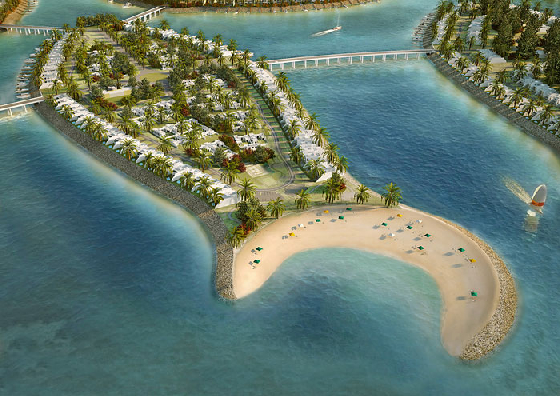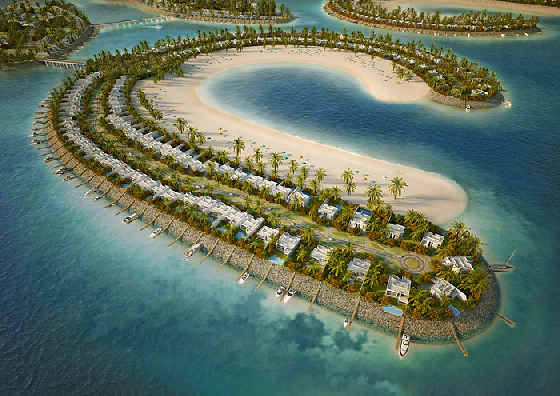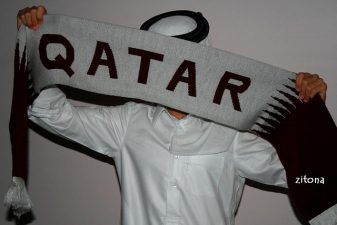 Too many artificial islands imperil endangered species, coral reefs, and humans too?
Too many artificial islands imperil endangered species, coral reefs, and humans too?
If Bahrain’s endangered dugong and turtle populations had a voice, surely they would use it to cry out against the Durrat artificial islands. The fishermen are shouting because they’re running out of fish. Even members of parliament are grumbling that land reclamation renders the country economically and socially unstable. There is a strong sense that too many poorly regulated artificial islands are a bad idea. Unfortunately, dissenting voices don’t count where $6 billion development projects are concerned, especially when Bahrain’s government and financing arm – the Kuwait Finance House – own them.
Built off the southern coast, the Durrat Al Bahrain project is 60% complete. In 2 or 3 years, there will be 2,000 beachfront villas, 3,600 apartments and offices, leisure facilities, a golf course, and other amenities, a “place like no other.” The King Hamad 2-lane highway will put the islands within a 35-minute drive of the international airport, which should draw a veritable stampede of luxury dwellers.
The process required to create a 21km2 necklace of 15 interconnected islands is deeply destructive. First it is necessary to remove loose material from the seabed to stabilize it, and then create the islands with fill. Finally, a sea wall must be built to protect the islands.
According to Bayyinah Salahuddin of Duke University, Dubai’s first artificial island Palm Jumeirah “buried and asphyxiated wildlife, increased turbidity, and changed the alongshore sediment transport.” These conditions, as well as pollution and higher temperatures, also lead to coral bleaching and are just as likely to occur in Bahrain.
The developers Atkins and KMC Bovis claim to have conducted appropriate ecological surveys, as well as water flow and water quality checks in order to mitigate potential damage. They also sponsored the Bahrain Center for Studies and Research in order to keep track of Bahrain’s marine life, and planted mangroves in order to restore their dwindling numbers. They want to demonstrate that “development and environment can exist harmoniously.”
Perhaps they are right. Perhaps there is no cause to worry that Bahrain, like lips full of Botox, is already puffed out to 76.3% its original size. San Francisco, Chicago and Cape Town were all partially created from landfill and still stand today. Then again, so was New Orleans, which endured serious flushing after Hurricane Katrina pummeled the levees built to protect it. Seems like a gamble only a suicidal species would dare.
More on artificial islands in the Middle East:
Coastal Erosion Threatens Evolutionary Hotspots In Gulf Region
Lebanon’s Going Ahead With $8 Billion Cedar Islands Project, Despite Dubai Debt
On Abu Dhabi’s “Al Reem Island” – Who’s Protecting (Artificial) Open Spaces In The Arab World?





